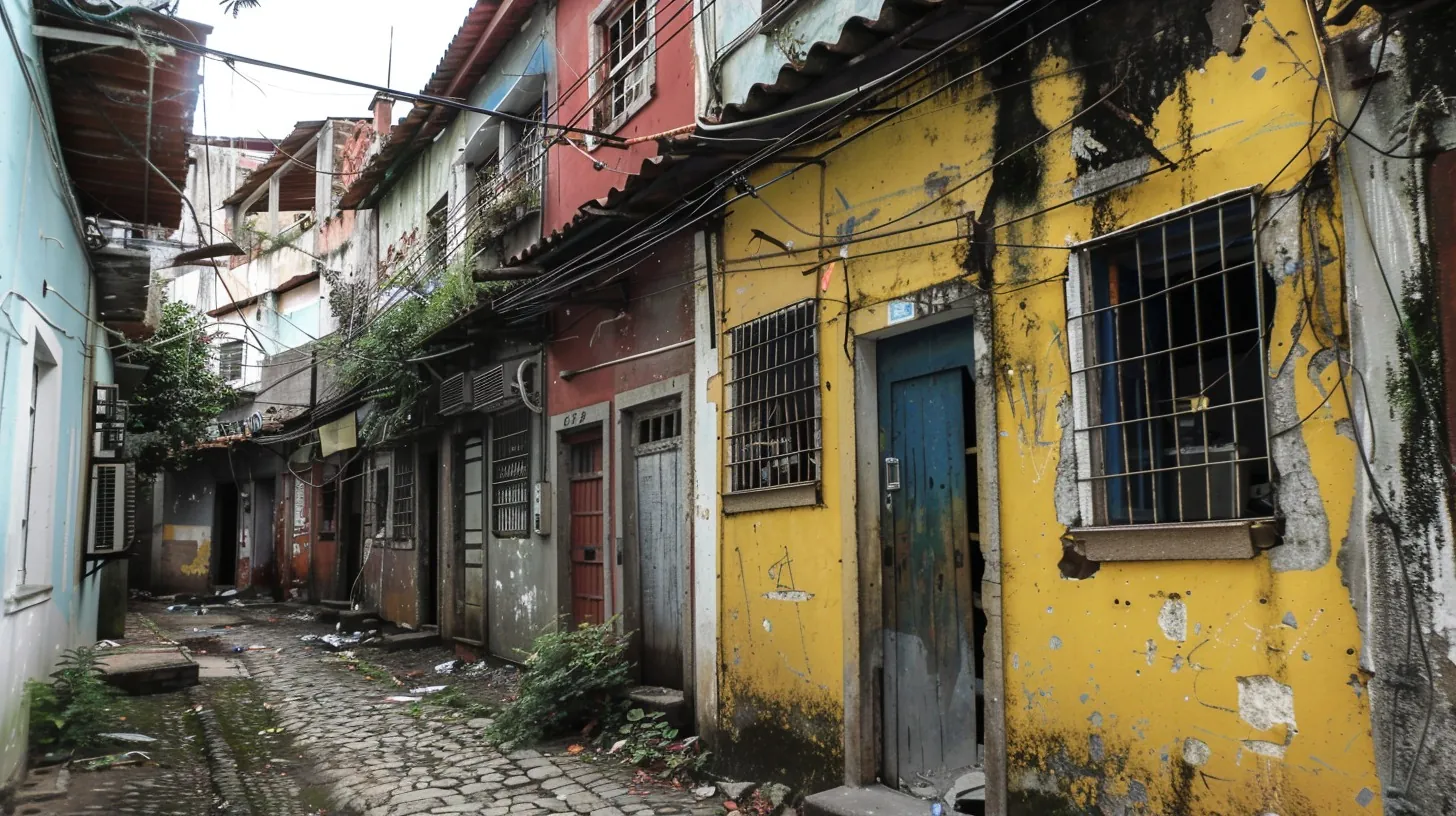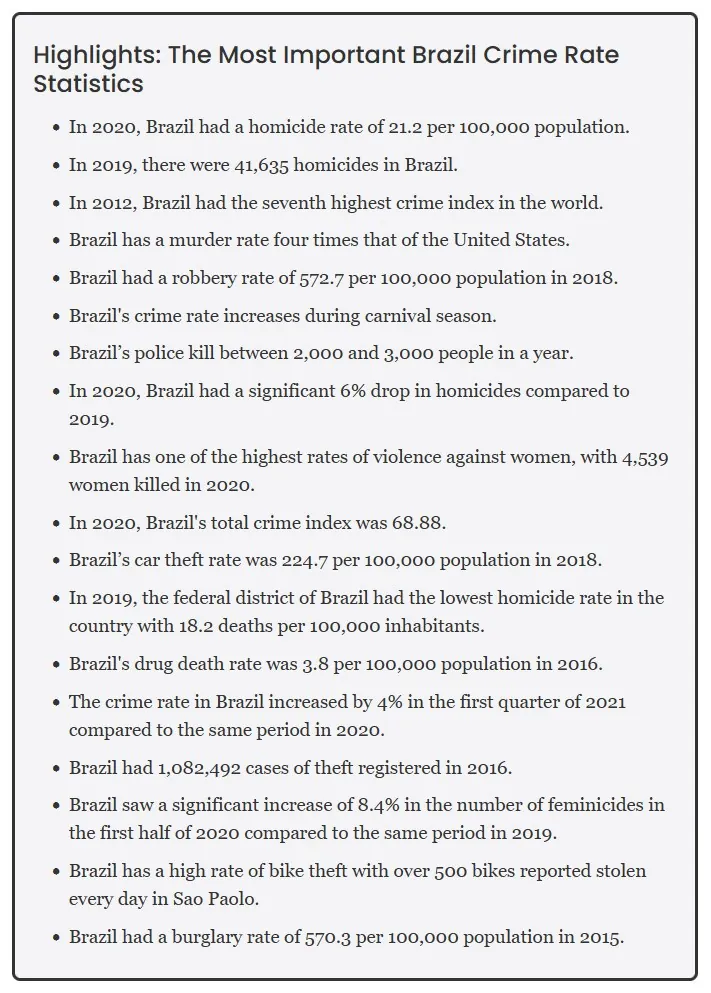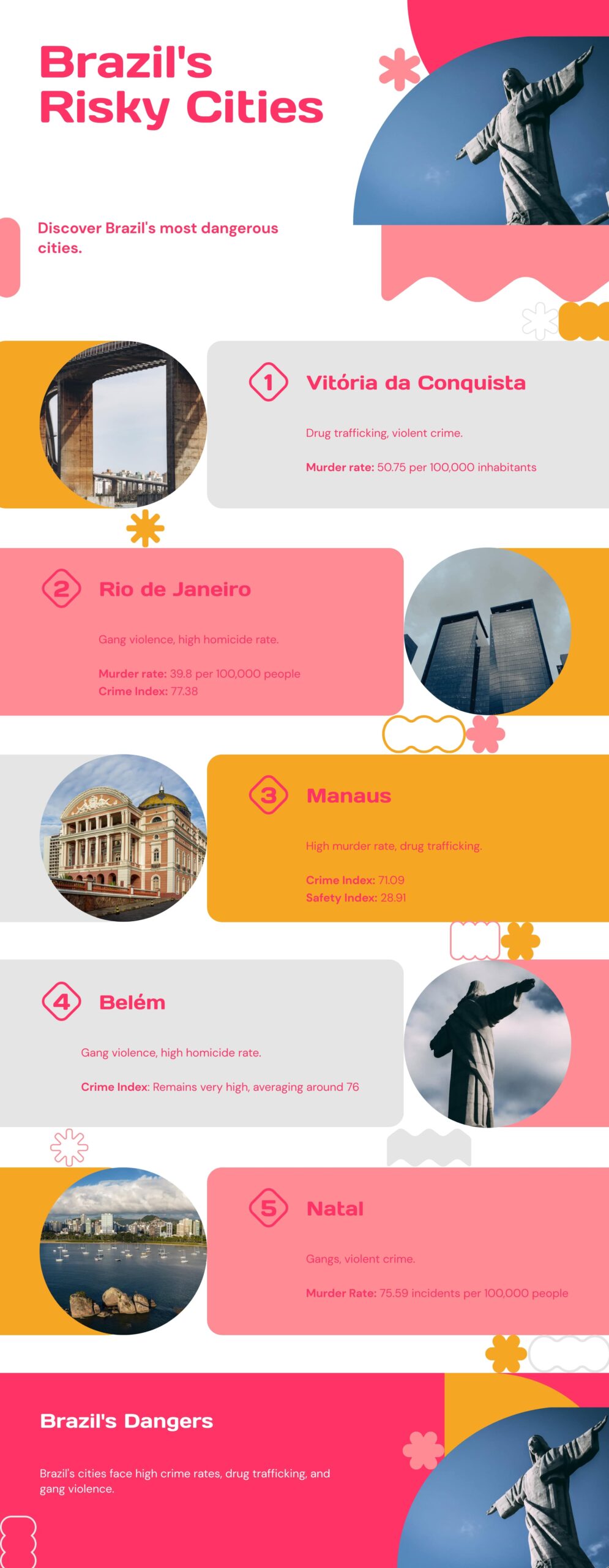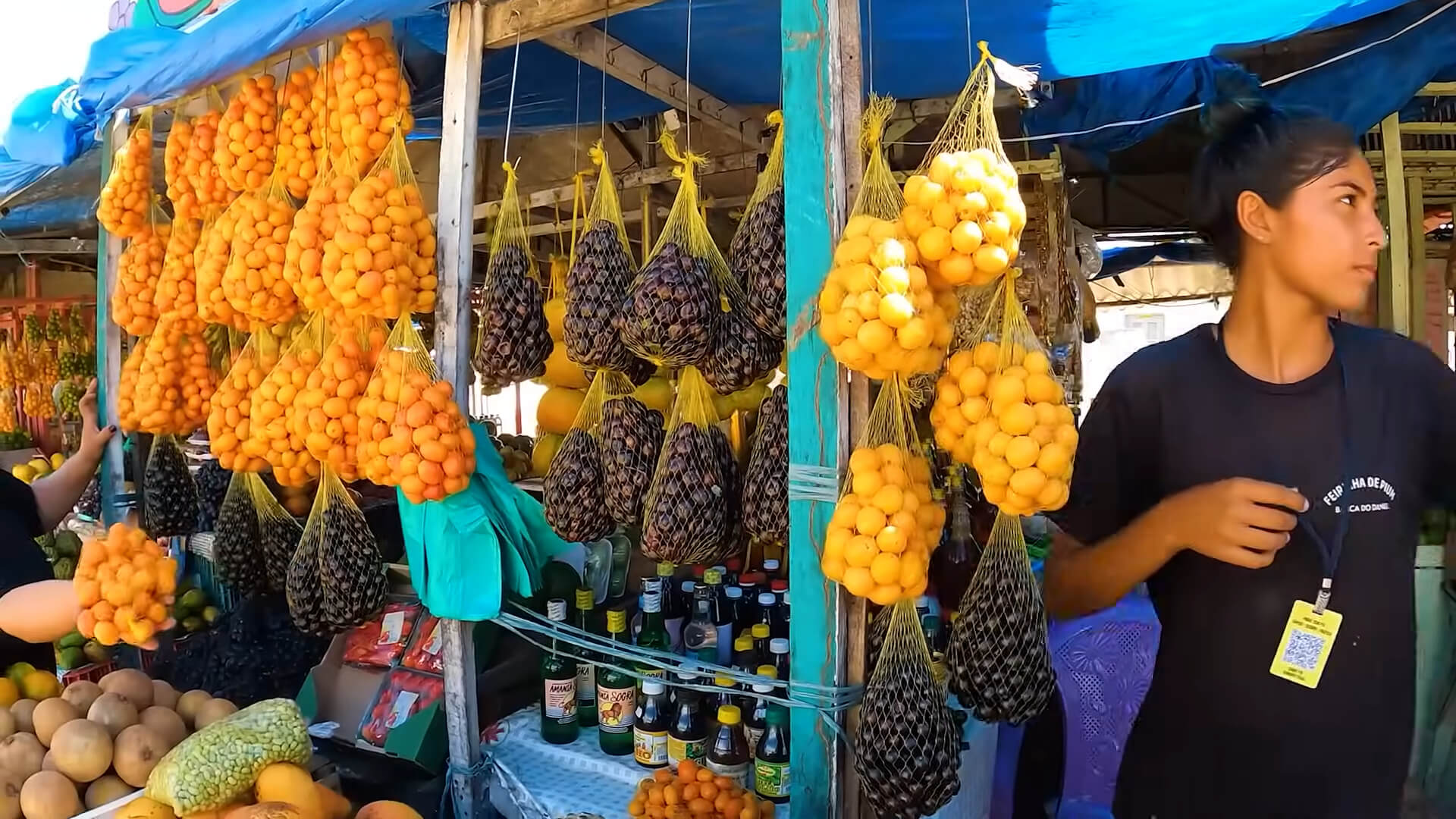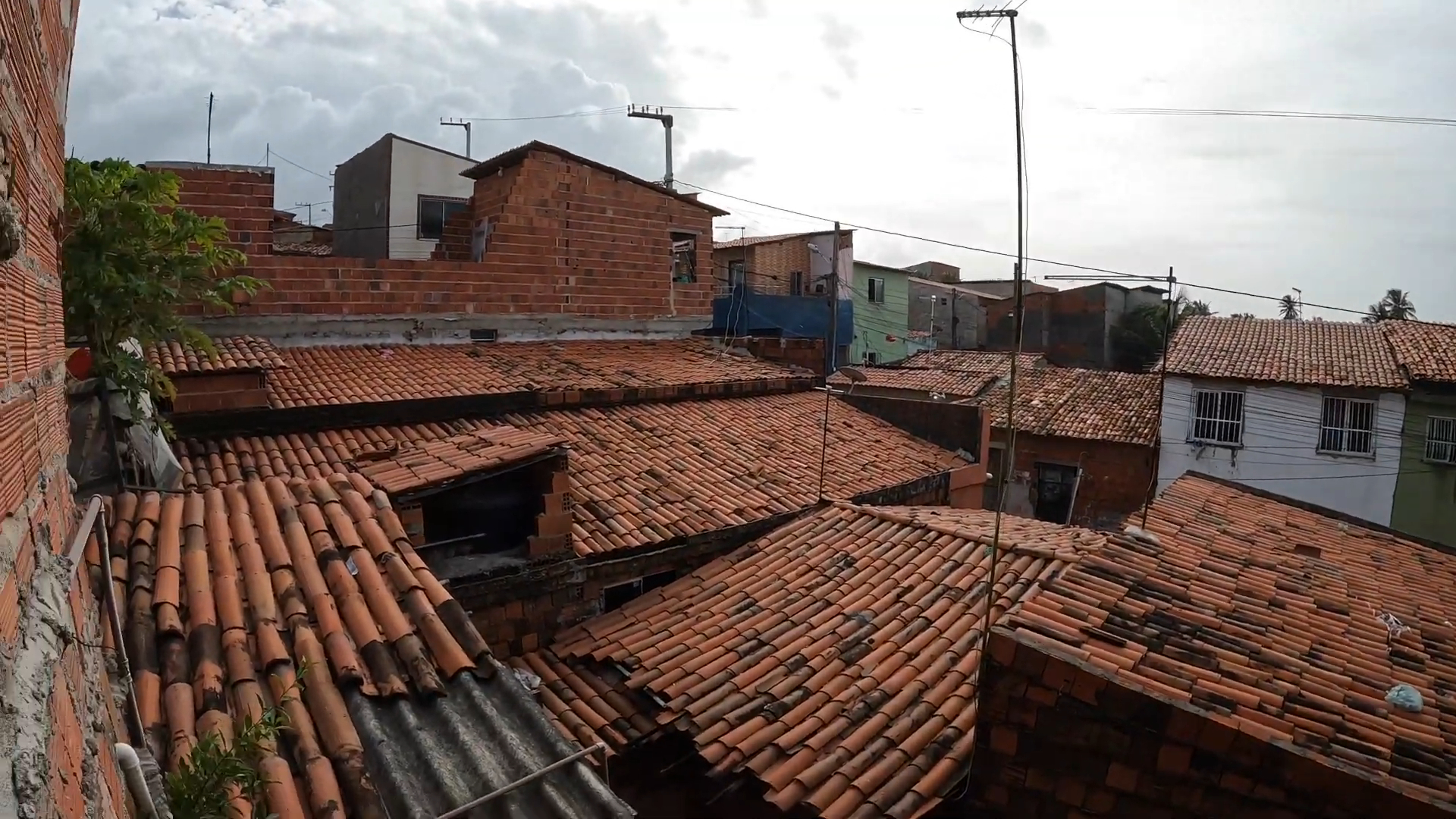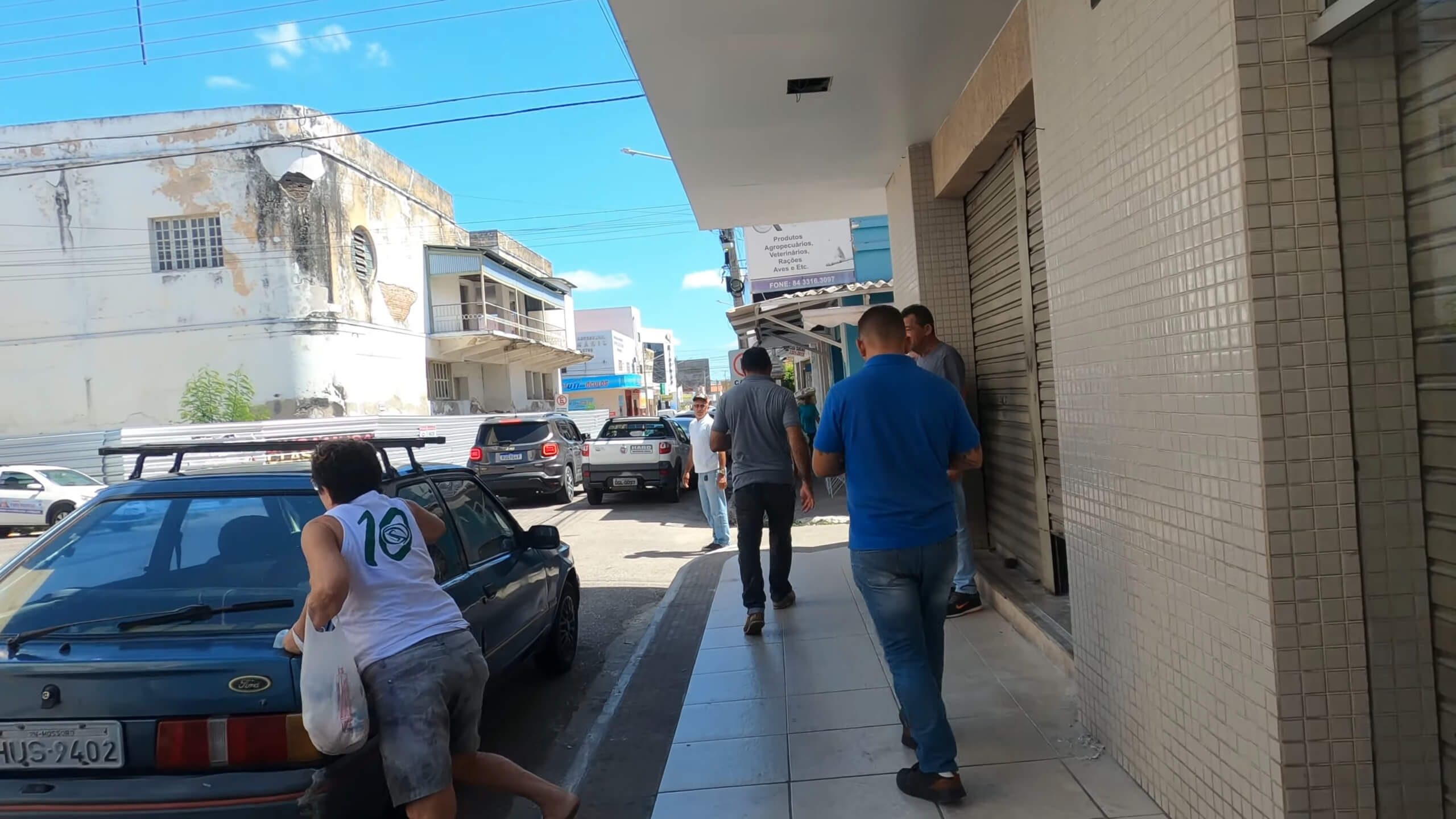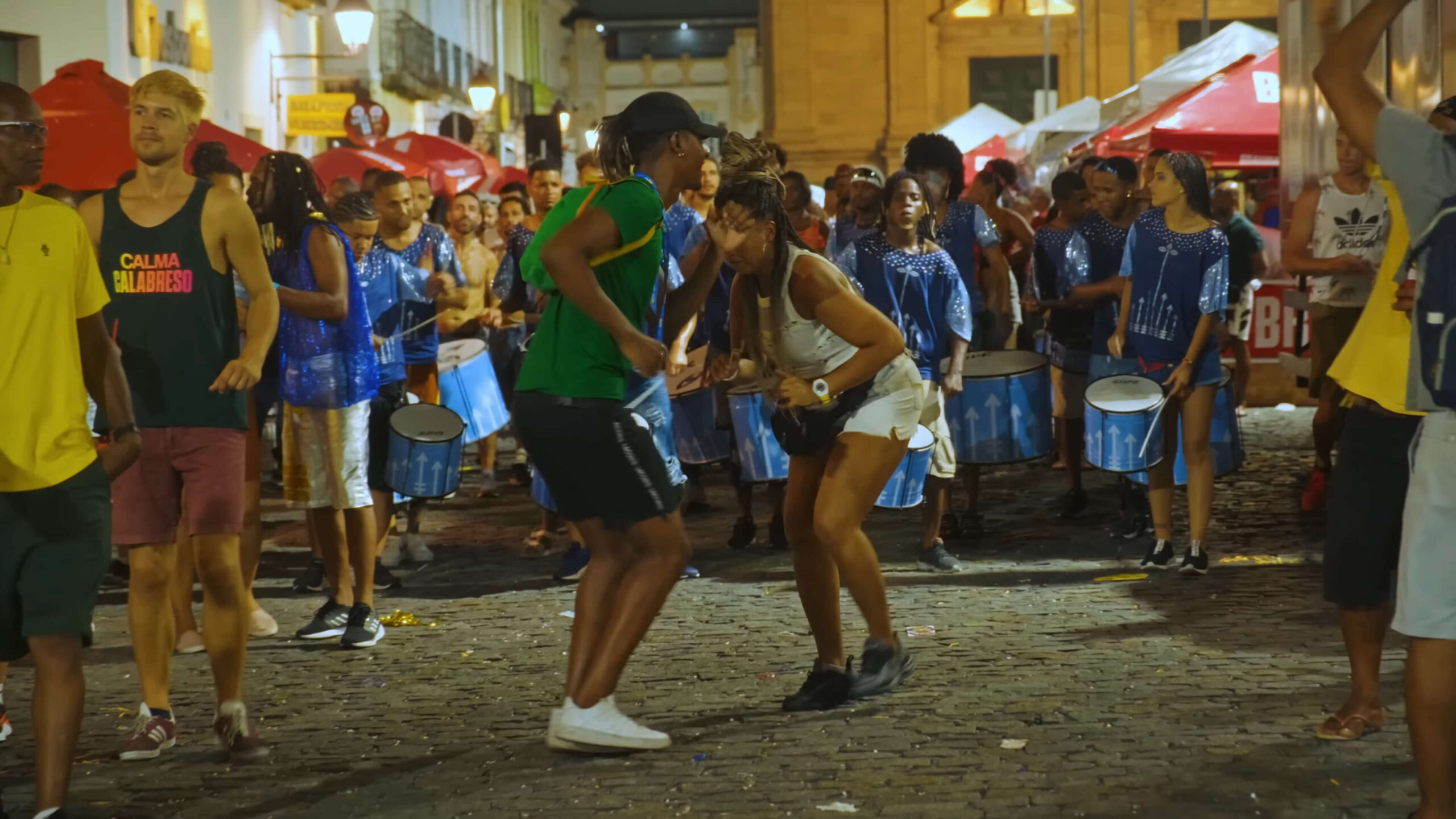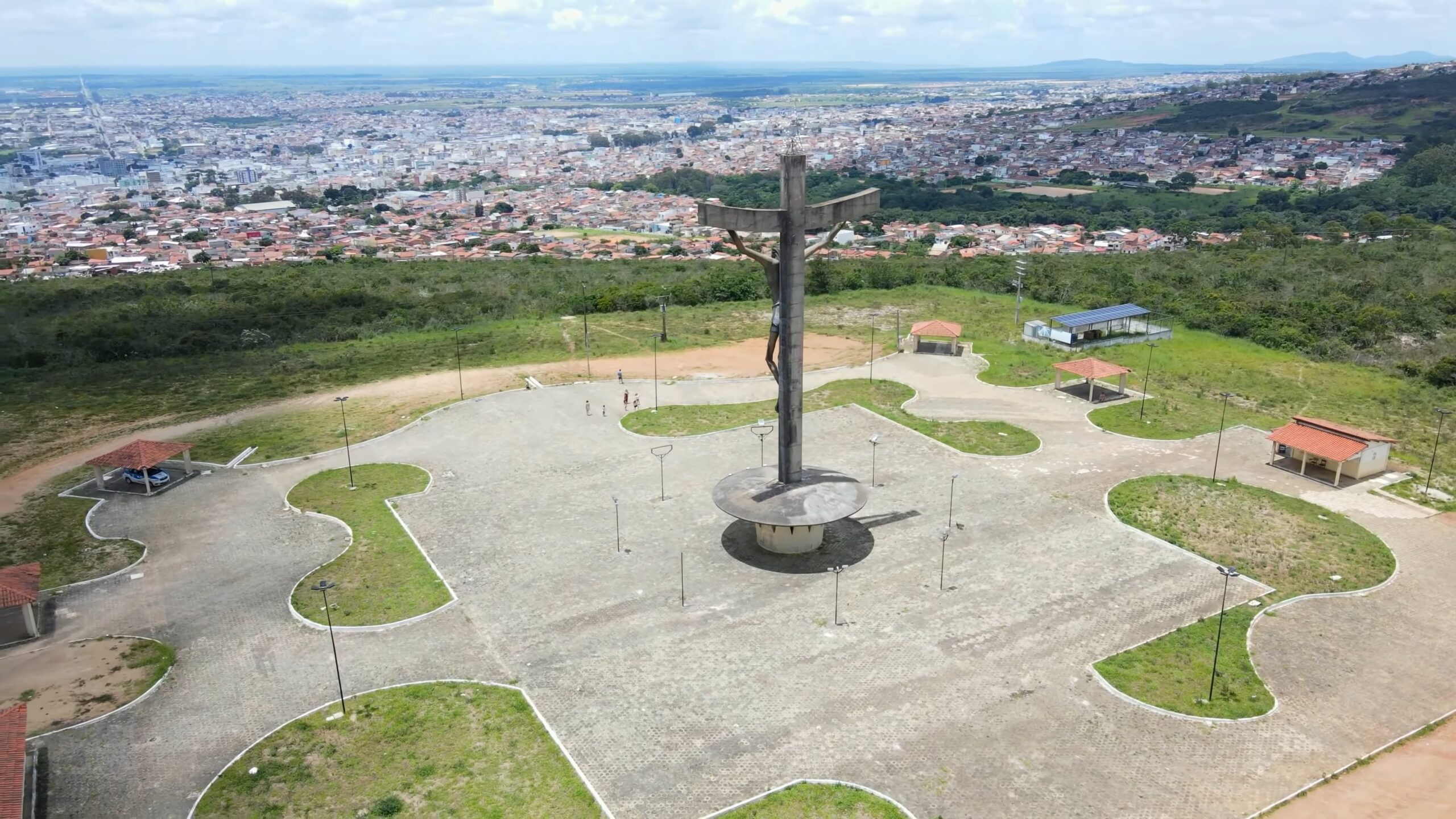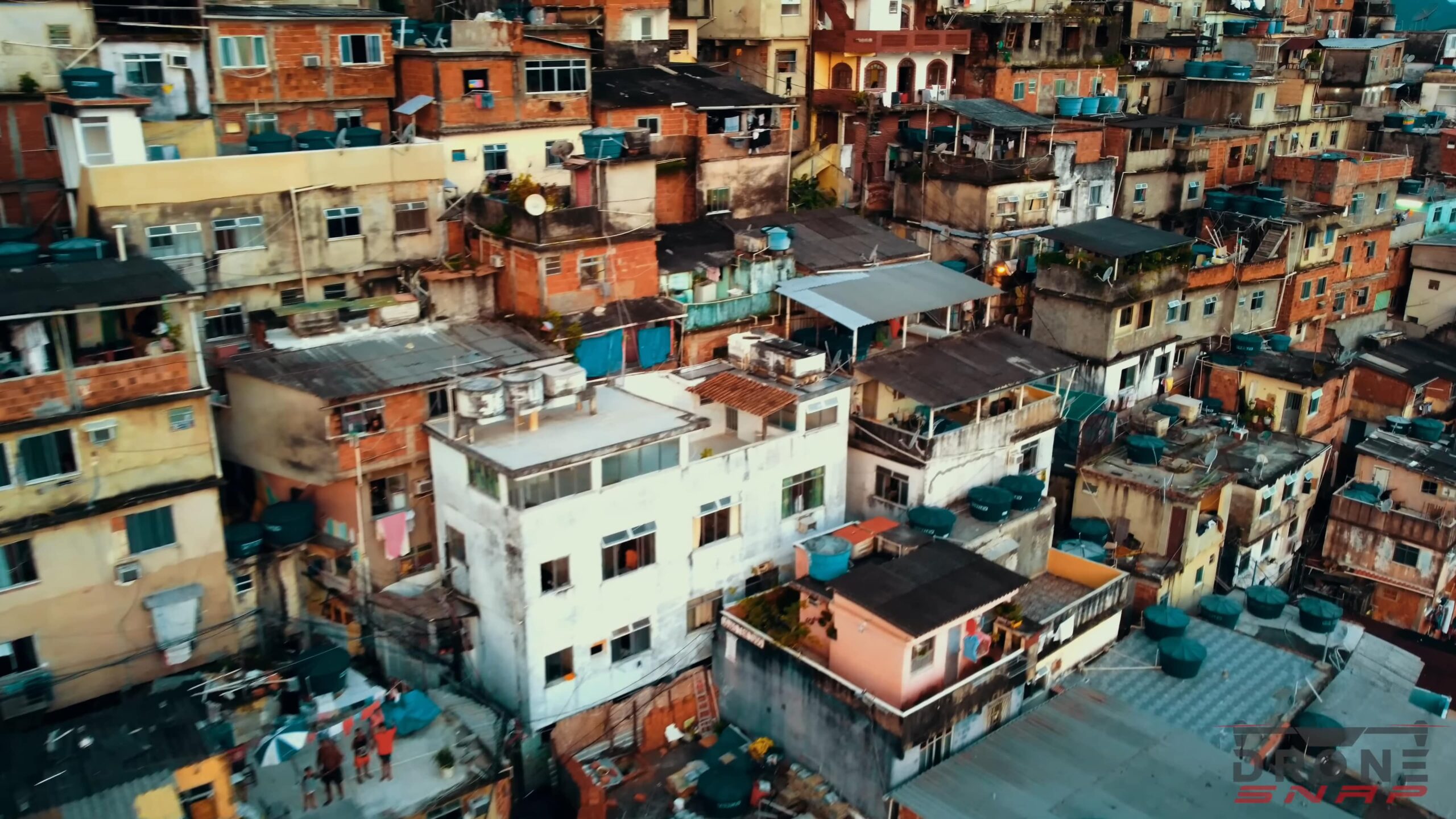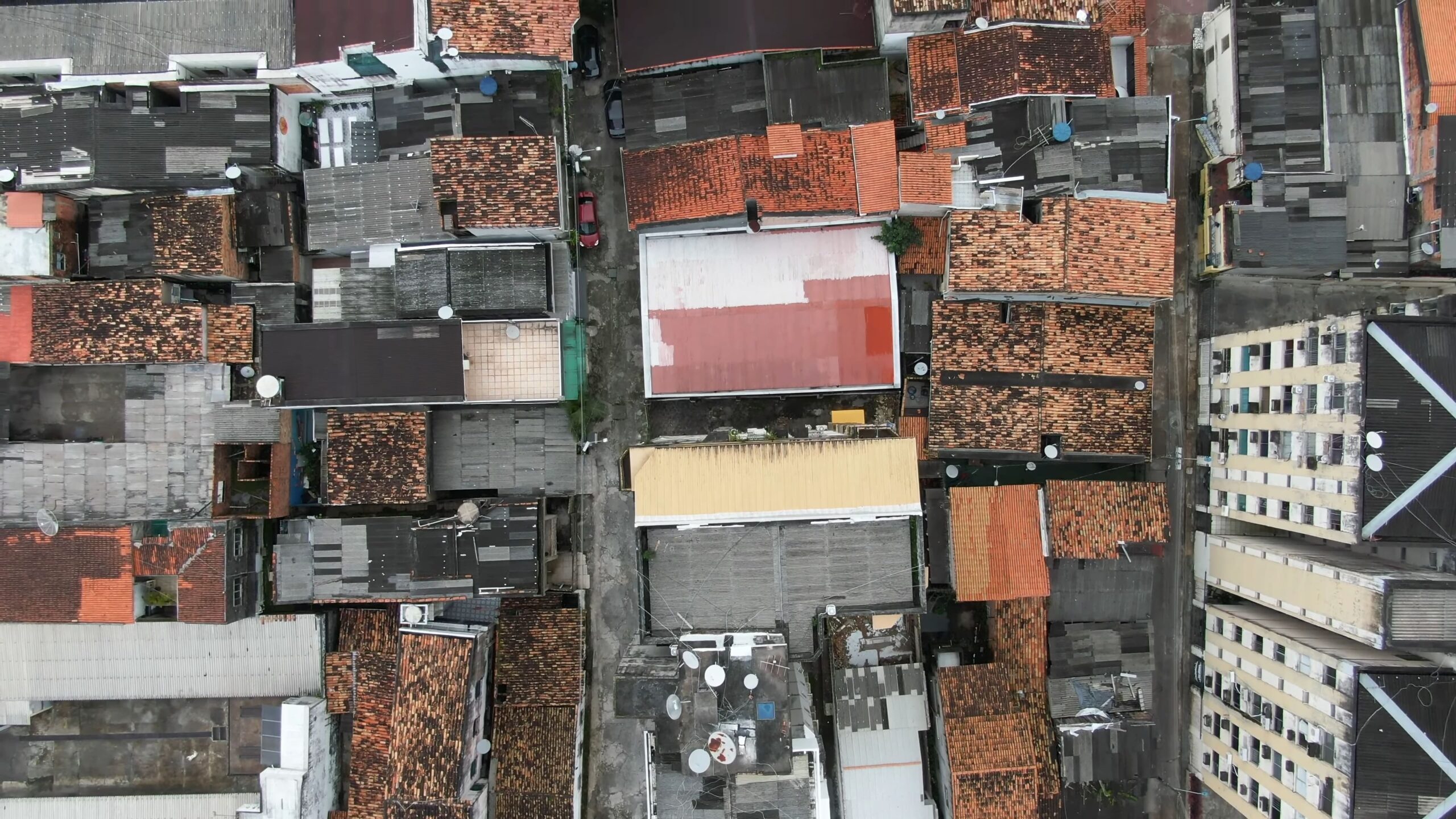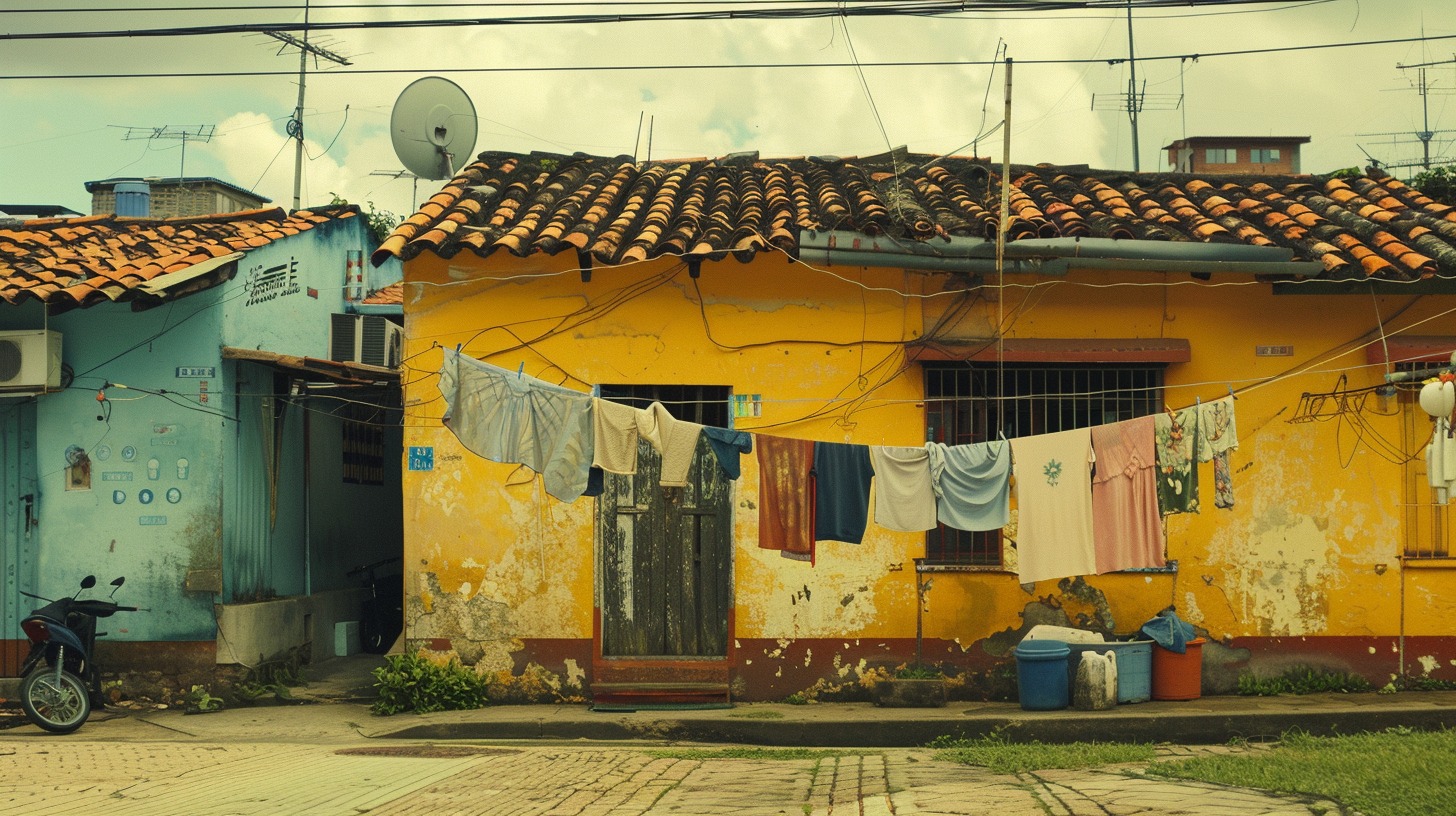Brazil, known for its lively carnivals and stunning landscapes, faces a stark contrast with high crime rates in some of its cities. These issues pose concerns for both residents and visitors attracted to the country’s rich culture.
For example, in Rio de Janeiro, you can go from enjoying beautiful beaches to encountering significant urban safety challenges just a few streets away. This reality contrasts sharply with the picturesque images often seen in travel guides.
The problem isn’t just in Rio; it’s nationwide. Even in cities celebrated for their historical sites and soccer enthusiasm, safety concerns loom large, affecting the day-to-day life and overall experience of both locals and tourists.
Between 1980 and 2010 there were 1 million homicides in Brazil. Dramatic increases in homicide rates followed rises in inequality, more young men in the population, greater availability of firearms, and increased drug use. Nevertheless, disarmament legislation may have helped reduce homicide rates in recent years according to this study.
Key Takeaways
- Brazil saw a record low of 40,429 ILVCs in 2023, the lowest since 2010.
- A 4.17% decrease in ILVCs from 2022, saving nearly 2,000 lives.
- 2020 homicide rate was 23.6 per 100,000, peaking at 30.8 in prior years.
- Top dangerous cities: Natal (75.59), Fortaleza (69.15), Feira de Santana (67.46) homicides per 100,000.
Safety Issues in Brazil’s Cities
Brazil is a country known for its vibrant culture and stunning natural beauty, yet it also grapples with significant urban safety challenges. As people, whether they’re locals or visitors, navigate through the cities, the discussion around safety concerns is more relevant than ever.
According to the balance sheet, Brazil ended 2023 with the lowest record of Intentional Lethal Violent Crimes (ILVC) since 2010. In 2023, 40,429 ILVCs were recorded. Compared to 2022, which recorded 42,190 ILVCs, the decrease is 4.17%, which represents almost 2,000 Brazilian lives saved.
Moving into 2024, the statistics around violent crimes such as assaults, homicides, kidnappings, and theft continue to raise concerns for anyone looking to experience or settle in this beautiful country.
Even years after events like the 2016 Summer Olympics, which put Brazil on the global stage, the country still faces ongoing issues with urban safety.
Brazil has the seventh-highest crime rate in the world with exceptionally high rates of violent crimes. Brazil’s homicide rate was 23.6 homicides per 100,000 inhabitants in 2020—and it has been as high as 30.8 in previous years. Brazil’s most massive problem is organized crime, as organized crime has expanded in recent years, and violence between rival groups is a common occurrence. Drug trafficking, corruption, and domestic violence are all pervasive issues in Brazil as per World Population Review says.
What Are The Most Dangerous Places Here?
1. Natal
Natal, Brazil, homicide rates, with 75.59 incidents per 100,000 people as per Jannik Lindner
This rate underscores the significant problem of violent crime in the city.
For safety while walking alone, see the statistics below:
| Time of Day | Safety Score | Rating |
|---|---|---|
| Daylight | 35.39 | Low |
| Night | 10.06 | Very Low |
2. Fortaleza
7. Rio de Janeiro: Fame and Fear Entwined
- Population: 13,824,000
- Murder rate: 39.8 per 100,000 people
In Rio de Janeiro, Brazil, the issue of gun violence and police actions has been prominent as per Statista research:
- Total Shootings in 2022: 2,962 incidents.
- Peak Month in 2023: March saw the highest number of shootings with 383 occurrences, making up about 13% of the year’s total.
- Lowest Month in 2023: August had the fewest shootings, with 155 incidents.
- Crime Index:77.38
- Safety Index:22.62
Following Supreme Court orders in 2022, the Rio de Janeiro state government was directed to devise a strategy to curb police-related deaths due to the high casualty rates and human rights violations observed. Between 2013 and 2019, civilian deaths due to police intervention soared, hitting a peak of 1,814 in 2019. Although there was a slight decline afterward, each year from 2020 to 2022 recorded over 1,200 civilian deaths, with a noted prevalence of structural racism affecting primarily people of color.
Efforts to Reduce Violence:
- The ADPF 635 (Allegation of Violation of a Fundamental Precept), or the ADPF Favelas Case, initiated by the Brazilian Socialist Party in June 2020, aimed to limit unscheduled police operations in favelas during the pandemic. This measure, despite being frequently breached, significantly reduced shootings from 7,368 in 2019 to under 3,000 in 2023.
- Police operations accounted for almost a third of all shootings in 2023, with murder or attempted murder being the second most common cause.
- In response to the violence, Rio de Janeiro’s government unveiled a plan in March 2022 to lessen fatalities from police actions. This resulted in 1,065 fewer deaths compared to the prior year. However, close to 1,000 people still died in both 2022 and 2023, which, while lower than 2021, remains above the figures during the pandemic-imposed restrictions of 2020, and significantly less than the 1,522 deaths from shootings in 2019.
Why Crime Rates Are High in These Cities?
Social issues play a big role in the safety problems people face in Brazilian cities. Looking into these issues helps us understand why some places have higher crime rates and what’s causing these situations.
Drug Trafficking and Gang Influence
Cities like Manaus and Belem, in particular, see a lot of violence that stems from fights between drug gangs.
This not only leads to more deaths but also affects the overall safety of residents.
Brazil has recently become a key destination country for cocaine. Indeed, the consumption of cocaine and crack has skyrocketed in the past decade. Although cocaine use in North America decreased significantly between 2006 and 2012, the annual prevalence of cocaine use among Brazil’s college students has remained the same, at 3 percent says Brookings in their research.
Economic Inequality and Crime
There’s a clear link between Brazil’s economic inequality and its crime rates.
Many young people in poor communities end up joining gangs as a way to get by, which keeps the cycle of crime going and makes cities less safe.
A discriminatory culture in the justice system, combined with great discretion given to the authorities to classify offenses as trafficking, resulted in increased imprisonment of addicts as per same source.
How City Design Affects Safety?
Lack of good infrastructure and services, it often leads to more crime. Improving urban design to create safer public spaces is key to tackling safety problems in Brazilian cities.
The building materials used for the homes must meet three major criteria: be low cost, light enough to be carried on men’s backs, and small enough to pass through the narrow streets of the favela. As a result, all the houses are built with bricks; concrete pillars are used for the structure; floors are made from floor beams and slabs; and the roof is almost always corrugated iron. Solène Veysseyre
| City | Hotspot Neighborhood | Citizen Initiative |
|---|---|---|
| Rio de Janeiro | Favelas | Community policing partnerships |
| Salvador | Subúrbio Ferroviário | Violence prevention programs |
| Fortaleza | Barra do Ceará | Youth engagement projects |
| Manaus | Zona Leste | Education and after-school activities |
Policy and Protection
| Year | Legislative Initiatives | Outcomes | Challenges |
|---|---|---|---|
| 2023 | Integrated Urban Surveillance Program | Reduction in petty crime rates | Implementation Costs and Privacy Concerns |
| 2024 | Expansion of Community Policing | Improved local trust levels | Limited Resources and Training |
| 2025 (Projected) | Enhanced Criminal Rehabilitation | Anticipated drop in recidivism | Public Perception and Systemic Integration |
Bottom Line
In wrapping up, it’s clear that Brazil’s captivating allure is shadowed by the prevalent issue of crime, affecting the day-to-day lives of its people and those who visit. The recent years have seen a slight improvement in the crime statistics, notably a drop in violent crimes, yet the battle is far from over.
Initiatives like the ADPF 635 and increased focus on community policing have shown potential, but the road ahead is still fraught with challenges.
The core problems—ranging from organized crime to economic disparities and inadequate urban planning—demand a comprehensive strategy that involves both policy reforms and grassroots efforts.
For Brazil to truly flourish and offer a safe environment for all, it will take a collective, enduring commitment to address these deep-seated issues head-on.
References:
- 1. Aggress Violent Behav: Crime and violence in Brazil https://www.ncbi.nlm.nih.gov/pmc/articles/PMC3763365/
- 2. Balanço 2023 Segurança Pública https://www.gov.br/planalto/pt-br/acompanhe-o-planalto/noticias/2024/01/brasil-tem-menor-numero-de-assassinatos-dos-ultimos-14-anos/240130_mjsp_balanco2023.pdf
- 3. Wayne Drehs and Mariana Lajolo: After The Flame https://www.espn.com/espn/feature/story/_/id/20292414/the-reality-post-olympic-rio
- 4. Reuters Murders: killings by police rose in Brazil https://www.reuters.com/world/americas/murders-killings-by-police-rose-brazil-last-year-report-shows-2021-07-15/
- 5. World Population Review: Crime Rate by Country 2024 https://worldpopulationreview.com/country-rankings/crime-rate-by-country
- 5.1. World Population Review: Most Violent Cities in the World https://worldpopulationreview.com/world-city-rankings/most-violent-cities-in-the-world
- 6. Jannik Lindner: Highest Crime Rate Cities In The World Statistics https://gitnux.org/highest-crime-rate-cities-in-the-world/
- 7. Armormax: Most Dangerous Cities in the World https://armormax.com/blog/most-dangerous-cities-in-the-world-2021-deadliest-most-violent/
- 8. Statista: Monthly number of shootings in Rio de Janeiro https://www.statista.com/statistics/1284214/monthly-number-shootings-rio-de-janeiro/
- 9. Paula Miraglia: Drugs and Drug Trafficking in Brazil https://www.brookings.edu/wp-content/uploads/2016/07/miraglia-brazil-final.pdf
- 10. ArchDaily: Rules of Favela Construction https://www.archdaily.com/531253/case-study-the-unspoken-rules-of-favela-construction
- 11. Numbeo: Crime in Salvador, Brazil https://www.numbeo.com/crime/in/Salvador
- 11.1. Numbeo: Crime in Natal, Brazil https://www.numbeo.com/crime/in/Natal
- 11.2. Numbeo: Crime in Manaus, Brazil https://www.numbeo.com/crime/in/Manaus
- 11.3. Numbeo: Crime in Belem, Brazil https://www.numbeo.com/crime/in/Belem-Brazil
